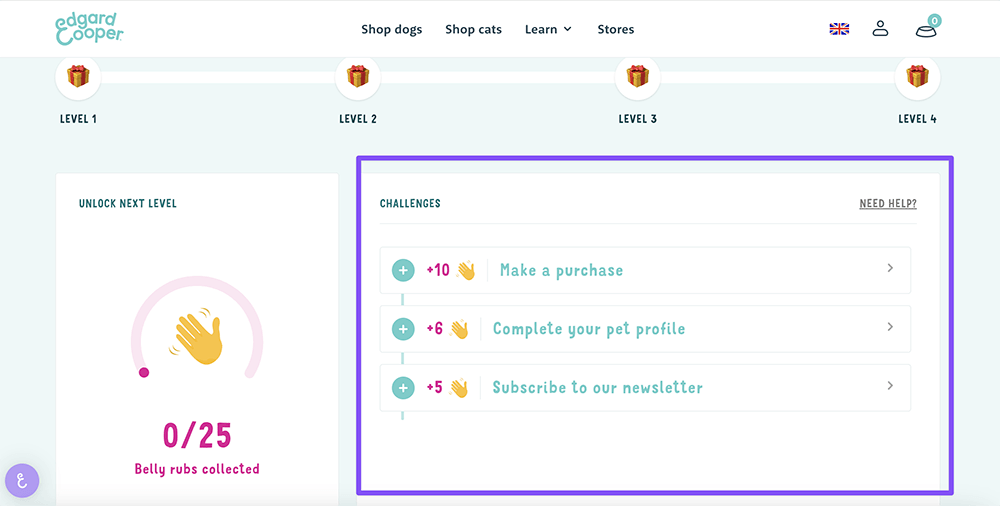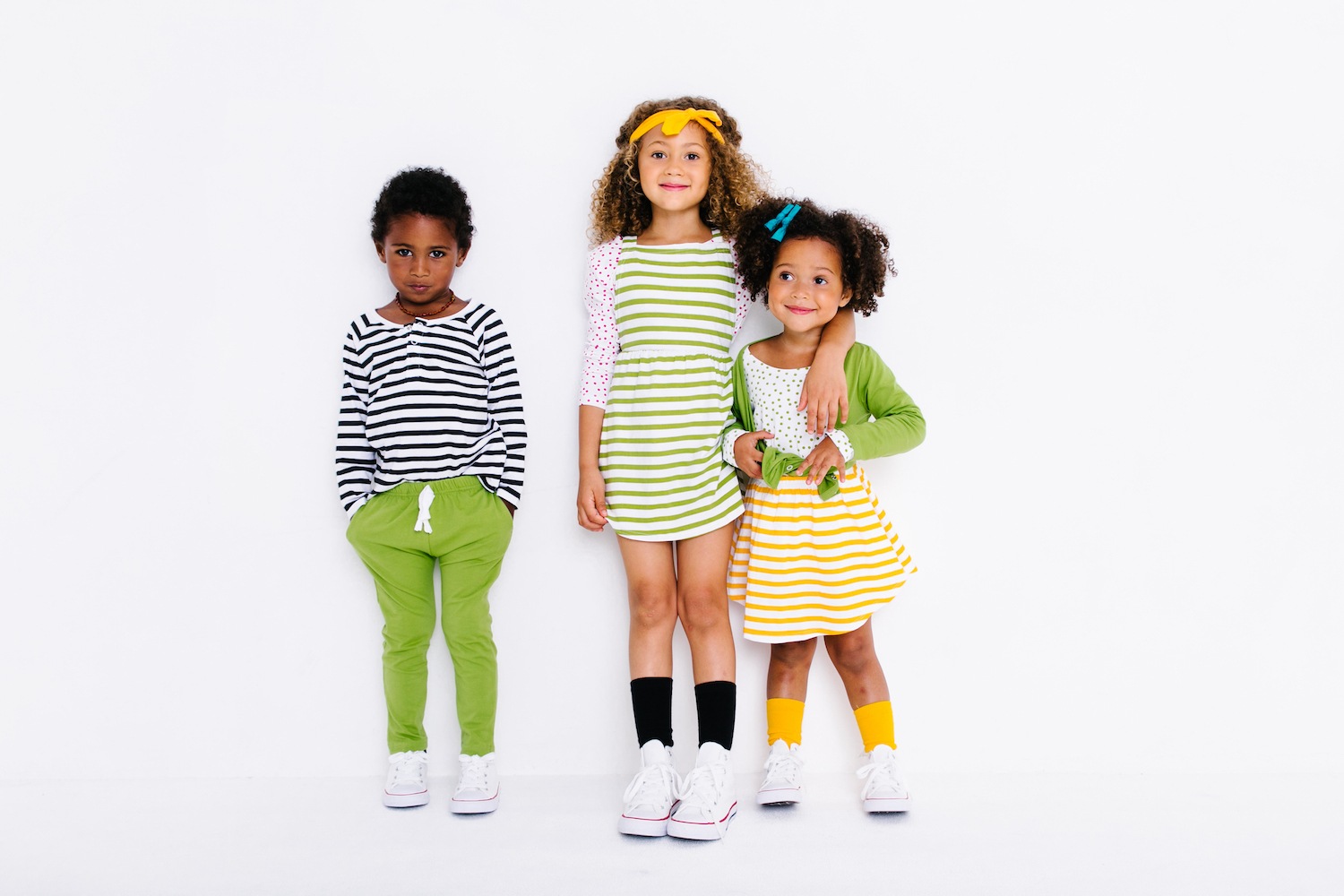Customers aren’t stupid. We all have some level of understanding that these days, one of our most valuable assets is our data — and it’s not something we typically want to give out for free.
Companies that want a better picture of their customers need a method to obtain their data ethically, which is where loyalty programs and loyalty points come in.
When a customer signs up for a loyalty program that uses a loyalty points system, the store can more accurately track the customer’s purchase frequency, preferences, customer lifetime value (CLV), and other factors.
However, loyalty points aren’t just good for the brand. More than half (58%) of consumers in Marigold’s U.S. Consumer Trends Index said loyalty points or rewards were the most desirable feature of a loyalty program—they expect some value back in exchange for their data. But how do you define the value of your program’s loyalty points?
In this guide, we’ll cover everything you need to know about loyalty points for your Shopify store, including:
- Understanding what loyalty points are and how they work
- How to calculate the value of loyalty points
- Best practices for setting loyalty rewards
- Examples of successful loyalty point programs
By the end of the guide, you should feel confident about the effectiveness of loyalty points and may even be ready to build a points-based loyalty program for your Shopify store.
LoyaltyLion customers reap the benefits of points-based loyalty programs – you could tooAmong LoyaltyLion customers with high-performing loyalty programs and revenue of $1-2m per year:
Use our revenue forecast calculator to find out what a high-performing loyalty program could do for your annual revenue. |
Demystifying loyalty points: How they work
Loyalty points are the “currency” of your loyalty program. Customers can exchange them for product or service-based rewards. The purpose of loyalty points is to encourage repeat business and customer engagement by creating a better value-for-money option compared to competitors selling similar products/services.
It’s also worth noting that loyalty points are not the same across all businesses — each business can set unique values for its loyalty points.
Loyalty point triggers: How customers earn loyalty points
Customers shouldn’t only get points when they purchase products. You can help them earn loyalty points through a variety of other (non-financial) behaviors. Here are some examples:
- Social media engagement: You can offer a small points reward to your customers for following your brand on social media accounts.
- Referrals: Getting a new customer can be difficult, so when your customer makes that job easier for you by referring a friend to your brand, give them a great points reward that they’ll likely be able to use right away.
- Reviews: Offer customers a points reward for adding a public review of a product they’ve purchased on your website (you can even add extra for photo/video reviews).
- Custom triggers: If your brand encourages a fairly unique customer behavior, you can set up custom triggers in your program to help align your loyalty program to your brand’s style or mission.
These are just some examples of methods customers can use to earn points in a loyalty program.
Redemption options: What customers can do with loyalty points
For most customers, the goal of building up a pot of loyalty points isn’t to hoard them — it’s to spend them. So, what are the options customers typically have for redeeming rewards with their points?
- Discount on next order: A common reward type is exchanging points for a whole-order discount (e.g., a percentage or a dollar amount off).
- Free product: You can offer the customer a free product in exchange for a fairly high amount of points.
- Charity donation: Customers can opt to donate the value of their points to a selection of charities your brand supports — this is an option Edgard & Cooper offers customers the choice to give a meal to a shelter dog.
- Free delivery: If you don’t use a tier structure in your program (which often offers free delivery at higher tiers), you can offer customers free delivery for a specified amount of points. For example, The Organic Butchery (previously named Coombe Farm Organic) uses a simple points-based system and offers free standard weekday delivery for 500 loyalty points.

These are the most common types of points-based rewards in a loyalty program. However, if you decide to use a tier structure for your loyalty program, you can also use points to determine the tier thresholds.
Common points-related questions you might get
When you create a loyalty program, it’s almost inevitable that you’ll run into a few questions that pop up quite often (in which case, it’s a good idea to write an FAQ section on your loyalty page).
Here are some common questions you might get from customers, or you might have after implementing a loyalty program:
- Question: Do loyalty points expire? Answer: You can set up point expiration in your loyalty program settings — for most brands who use it, annual expiration is very common. Having points expire after a specific time frame is a good strategy for encouraging program engagement (by adding time pressure to use earned points). However, be transparent about points expiration with your customers — you don’t want them to earn lots of points, saving for a big reward, only to find them gone the next day because they didn’t know points could expire.
- Question: What are loyalty tiers? Answer: Loyalty tiers are different ‘levels’ of loyalty membership in which customers can earn better rewards by frequently engaging with the loyalty program and passing the threshold to the next tier.
- Question: What if we need to change the value of points or rewards? Answer: Prepare your customers ahead of time. If you know you’ll be changing aspects of the loyalty program, make sure you give your customers enough time to process and learn more about the changes.
Speaking of the value of points and rewards, in the next section, we’ll discuss how to calculate the true value of your points to help you create a more effective program for your Shopify store.
How to calculate the true value of your points
While it might seem like it to some, the value of points isn’t plucked out of thin air—there is logic to assigning a specific value to your loyalty points.
If your program is set to give 5 points for every $1 spent and a $5 money-off reward requires 500 points, a customer would need to spend $100 with you to earn those 500 points.
To work out how much a point is worth, you would divide the money off amount by the number of points required – in this case, divide $5 by 500 points. This means each point is worth 1 cent.
500 points/$100 = 5% <- You give customers 5% back.
Success Tip: We recommend setting up a maximum of 5% back to keep the program sustainable—1 point = 1 cent is also pretty common, and customers aren’t likely to question it.
However, while it’s likely the simplest, that’s not the only way to calculate the value of your program points; you can also:
Take a cost-based approach: To do this, you’ll need to figure out your cost-per-point (CPP) by dividing the cost of rewards by the amount of points spent. With the cost figure in mind, you can adjust your point value to a more sustainable figure.
Take a competitor-based approach: Is there a status quo for loyalty programs in your niche? It can be a good idea to go with the flow and match competitor offerings (especially if they’ve grown). On the other hand, if you have some customer research to back you up, deliberately introducing a new value system to the niche can help drum up some attention.
Take a customer-centric approach. Let’s say you start your program off with the standard points value using the above calculation — but your customers don’t interact much with the program. It would be a good idea to gather some feedback from your customers to see if there’s a problem with the value system (which customers would indicate with phrases such as “it’s hard to earn rewards” or “I don’t feel like the rewards are worth the effort of earning points.” If so, adjust the value of points accordingly.
Best practices for setting rewards
Before you build a loyalty program for your store, we have a few words of advice to help you maximize your program’s rewards.
Align rewards with brand values and customer desires
A loyalty program isn’t going to inspire much loyalty if the rewards your brand offers don’t align with its values or what customers want. So, make sure you design your rewards with your brand and customer desires in mind. For example, Astrid & Miyu offer 1000 points for recycling old jewelry, even if it’s from other brands, and with those points, customers can get £10 off their next order.
Explore diverse reward options
To help make your program more memorable, consider offering different kinds of rewards that go beyond traditional discounts. For example, you can offer experiential rewards such as exclusive access to a product-based workshop or early access to sales and product launches.
You can also try more personalized offerings, such as using customer purchase history to offer a free product that complements a product they already own.
Implement tiered reward structures
If you want to boost your CLV metrics, implementing a tiered-based structure is a great approach. By adding incrementally higher-value rewards to each tier (and highlighting those better rewards), you challenge your customers to meet the tier thresholds—and often, they’ll want to beat your challenge.
Edgard & Cooper, a brand we mentioned earlier, also uses a tier-based structure to challenge customers:

Optimize reward redemption processes
The last best practice we’ll cover is making sure your rewards redemption process makes it super easy for loyalty members to use their points.
One way to achieve this is to enable in-cart rewards in your program — which lets your customers seamlessly interact with your loyalty program, even while checking out a product, which means they can see if they have a reward available before finishing the checkout process.
Each of these best practices can help you optimize your program and make it one that your customers will want to use.
Loyalty points in action: Real-world examples
To inspire you and prove that points-based loyalty programs are effective, we’ll show you two loyalty point examples that brands are using this strategy with great success.
The Organic Butchery
We previously mentioned this brand in the article, so we thought it’d be a good idea to share more details about their approach and results.
Formerly known as Coombe Farm Organic, The Organic Butchery is a producer of organic meat and fish with a passion for regenerative farming. During COVID-19, many consumers shifted to online shopping, and The Organic Butchery saw many new customers order from their online store.
To make the most of this influx, the team wanted to create a loyalty program to help retain all these new customers. The program they made was a simple points-based approach that offered 5 points for each £1 customer spent, with some other opportunities to earn points.

The team also promoted the program in their email marketing with LoyaltyLion’s Mailchimp integration, and soon the results started coming in.
Today, 53% of their revenue is generated from loyalty program members, and the team saw a 70% increase in their spending.
June & January
Based in the U.S., June & January is a baby and toddler clothing brand, and they wanted to reward their close-knit community for their loyalty while encouraging greater repeat purchase rates to increase customer lifetime value.
The folks at June & January migrated their existing loyalty solution to LoyaltyLion to take advantage of the dedicated loyalty page feature — which they added to the site’s main navigation header.
They also took advantage of the migration by building a tiered points-based loyalty system and using the new loyalty page to explain the benefits of each tier, with custom rewards for members to motivate them to move up through the tiers.

As a result of their loyalty program rebuild, the repeat purchase rates of redeeming program members are 42% higher than those of their non-redeeming members. Today, June and January’s loyalty program members spend 52% more than guest visitors, and loyalty program purchases make up 36% of their total revenue.
The results of both of these strategies, despite different approaches, show that it’s not only the loyalty program itself that creates success — it’s also the work that goes into understanding customer needs and preferences.
A points-based loyalty program can be the heart of your retention strategy
Overall, even the most basic points-based loyalty system can have significant positive benefits for your Shopify store — it can help increase your repeat purchase rates, CLV, and business revenue.
But to get there, it’s important to understand how a reward point system for customers works and what value you want to assign to it to help build a program that works for both your business and your customers.If you’re ready to start building a loyalty program and maximize the potential of customer loyalty, check out LoyaltyLion’s pricing to find a plan that works for you.





